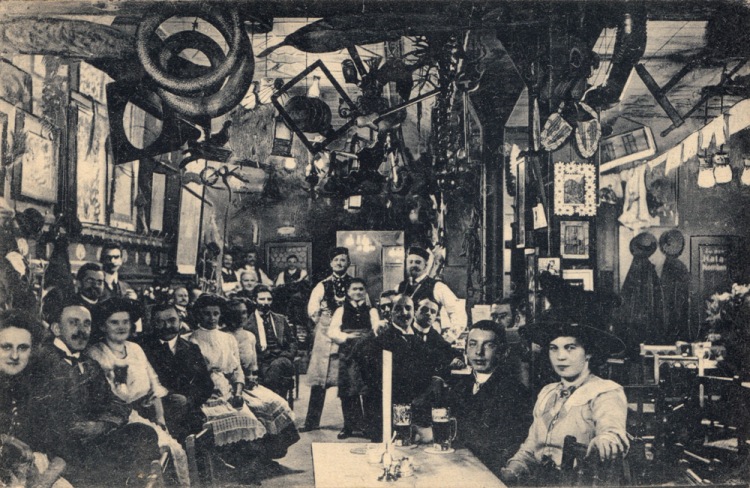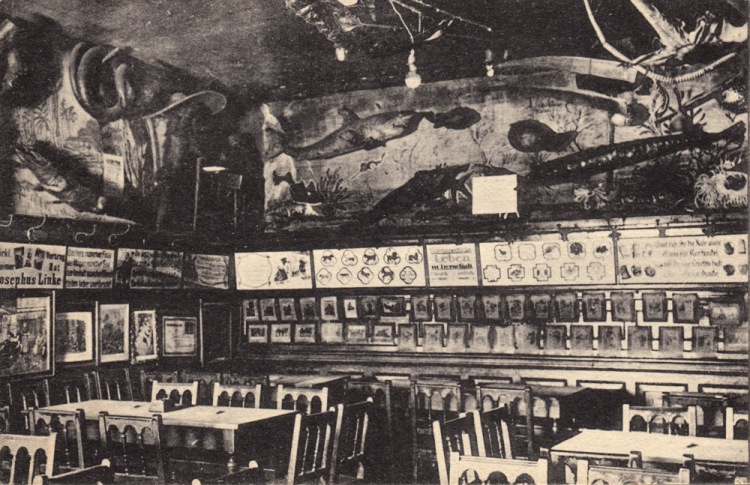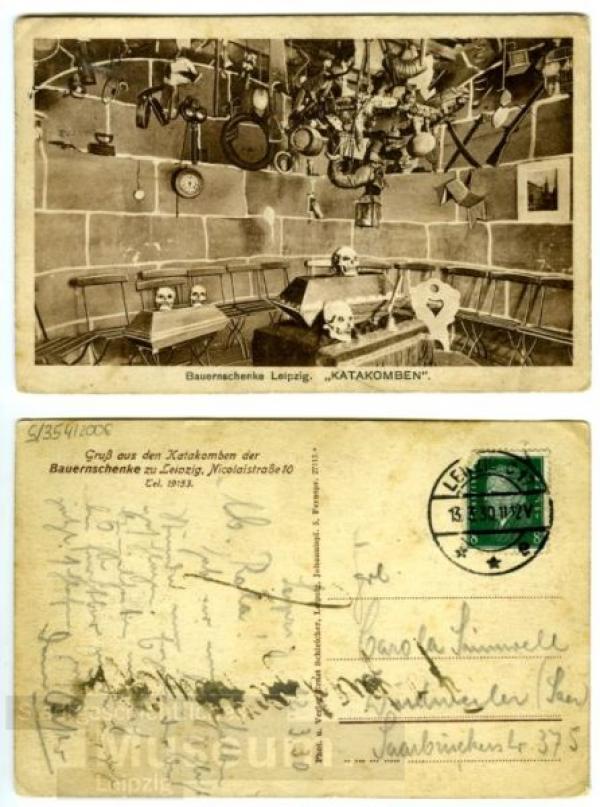Dresden’s strangest bar, where customers were told to ‘abandon hope’ on their way in.
In the early twentieth century, visitors entering Dresden’s Bauern-Museum (peasants’ museum), which was not a museum at all but a cellar bar, were confronted by the bizarre figure of proprietor Josephus Linke, dressed as a gravedigger and holding a staff in one hand and a small coffin in the other. Skeletons and ghouls were painted on the walls about him, along with Dante’s instruction to those entering hell: ‘Mensch der Du da ein gehst. Lasse die Hoffnunf drausen’ (abandon hope all ye who enter here).
Things were no less strange inside, where the bar lived up to its name with a weird and wonderful collection of objects that covered the walls and hung from the ceiling. Oddities included bear meat that Napoleon had refused to eat, and the clay remnants of the first man.1

Pubs like the Bauern-Museum were popular in Germany’s towns and cities in the early twentieth century. They were a variation on the rural pubs known as Bauernschänke (peasant pubs) or Dorfschänke (village pubs) that were an integral part of German rural culture. The Bauernschänke ‘recreated a kind of fantasy ambience with collections of objects’, including farming equipment, wagon wheel chandeliers, bucolic scenes painted on the walls, and decorated ceilings giving customers the impression that they were seated under the boughs of trees.2
The urban variations of these pubs, like Dresden’s Bauern-Museum, went one step further in their efforts to create a spectacle. Here, the collections of objects were not restricted to rural farming implements and indoor trees. Anything went, including household artefacts, objects of dubious historical provenance, models of flora and fauna, pieces of junk.

Many pubs, like the Bauern-Museum, played on the fact that they were housed in cellars. This gave them license to call themselves catacombs (Katakomben), and to fill their rooms with skulls, coffins, and other ghoulish artefacts.

Sources:
- Andreas Them, “Bei ihm wurde aus einer Mücke eine Rarität”, Sächsische Zeitung, Saturday 1 September 2012, [http://www.sz-online.de/nachrichten/bei-ihm-wurde-aus-einer-muecke-eine-raritaet-2426663.html, accessed 31 January 2018]
- Peter van Mensch, “Ace caffs with nice collections attached” in Newsletter of the International Council of Museum COMCOL, No. 28, September 2015, pp.8-11.
All images taken from postcards from the author’s own collection, unless specified.